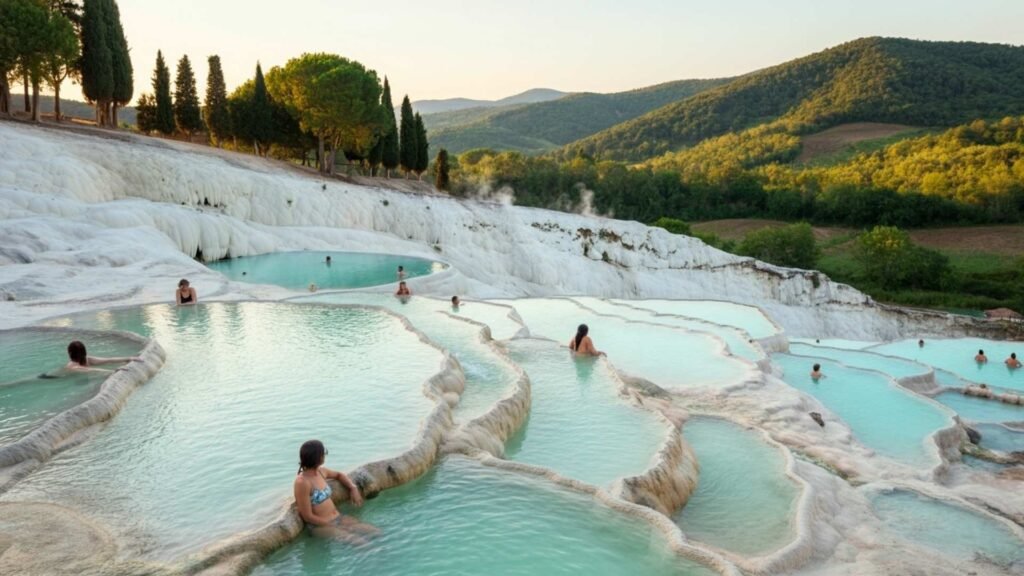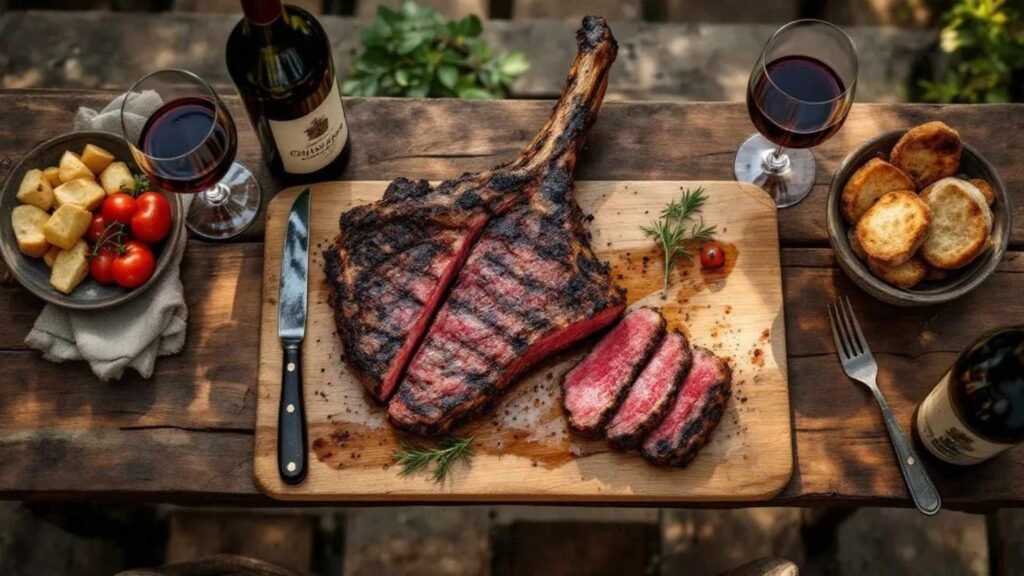Nestled in the heart of central Italy, Tuscany is a land where time seems to slow down, inviting you to savor life one breathtaking moment at a time. With its rolling green hills, endless vineyards, ancient hilltop towns, and steaming natural hot springs, Tuscany offers a perfect fusion of gastronomy, wellness, and culture. Here, every meal is a celebration, every glass
Why Visitors Choose Tuscany
Tuscany is more than just a destination—it’s an experience that blends natural beauty, culture, and unforgettable flavors. Nestled in the heart of Italy, this enchanting region attracts visitors from all over the world for its rolling hills, medieval villages, and world-class art.
One of the main reasons travelers choose Tuscany is its timeless charm. From the Renaissance masterpieces of Florence to the vineyard-dotted landscapes of Chianti, every corner offers postcard-worthy views. Wine lovers flock here for renowned labels like Brunello di Montalcino, while food enthusiasts savor handmade pasta, olive oil, and traditional Tuscan dishes.
The region also offers a slower, more relaxed pace of life—perfect for those seeking a break from the bustle. Cycling through golden fields, soaking in natural hot springs, or enjoying sunset over the cypress-lined roads are just a few ways to reconnect with nature and yourself.
Ultimately, visitors choose Tuscany because it’s a place where history, gastronomy, and beauty come together, leaving them with memories as rich and enduring as the land itself.
1. Healing Waters: Tuscany’s Natural Hot Springs

The volcanic geology of Tuscany has gifted the region with an abundance of natural thermal springs, long treasured for their therapeutic properties. Visiting one of these hot springs is not just a wellness activity—it’s a sensory and historical journey.
- Terme di Saturnia: Perhaps the most famous, Saturnia’s cascading limestone pools are filled with mineral-rich water that stays at a soothing 37.5°C year-round. Locals swear by its skin-rejuvenating and muscle-relaxing effects. Bathe under the open sky while listening to the soft rush of water over the stone terraces.
- Bagno Vignoni: Unique in the world, this tiny medieval village boasts a large hot-water pool right in its main square, used since Roman times. The surrounding countryside offers charming spa hotels with private thermal baths.
- Bagni San Filippo: Hidden in the Val d’Orcia woods, these natural pools are framed by striking white limestone formations, known as the “White Whale,” creating a fairy-tale backdrop for a tranquil soak.
These springs are not just about physical relaxation; they offer a deeper kind of wellness, where the warm water, fresh air, and Tuscan landscapes combine to restore balance to both body and mind.
2. Vineyards & the Art of Tuscan Wine

Tuscany is a wine lover’s paradise, home to some of the most celebrated labels in the world. The combination of a mild climate, mineral-rich soil, and centuries-old winemaking traditions has produced vintages that are nothing short of exceptional.
- Chianti: Stretching between Florence and Siena, this iconic wine region is dotted with picturesque estates offering tastings of robust reds paired with pecorino cheese and cured meats.
- Montalcino: Birthplace of the legendary Brunello di Montalcino, one of Italy’s finest and most age-worthy wines, known for its complexity and elegance.
- Montepulciano: Famous for the Vino Nobile di Montepulciano, this area is a dream for oenophiles who enjoy full-bodied wines with deep character.
Many vineyards welcome visitors for wine tours that often include strolling through sun-kissed vines, exploring centuries-old cellars, and learning the art of pairing wine with regional dishes.
3. A Culinary Journey Through Tuscany

Tuscan cuisine embodies the Italian philosophy of la cucina povera—simple dishes made with the freshest ingredients. It’s not about complexity, but about letting natural flavors shine.
- Pici: Thick, hand-rolled pasta, often served with a garlic tomato sauce (aglione) or a slow-cooked meat ragù.
- Bistecca alla Fiorentina: A show-stopping, wood-grilled T-bone steak, traditionally cooked rare and served family-style.
- Ribollita: A hearty bread and vegetable soup that originated as a peasant dish but is now a beloved classic.
- Cantucci & Vin Santo: Crunchy almond biscuits dipped into sweet Vin Santo wine—a traditional way to end a Tuscan meal.
Exploring local farmers’ markets is a must. From olive oil tastings to artisanal cheeses, every bite tells the story of the land and its people.
4. The Harmony of Gastronomy & Wellness
In Tuscany, wellness is not confined to spa treatments—it’s a way of life. Here, slow living and mindful eating are part of the daily rhythm. You might start your day with a morning dip in a thermal pool, spend the afternoon hiking through vineyards, and end the day with a sunset dinner overlooking the hills.
Staying at an agriturismo—a traditional farmhouse accommodation—offers an authentic taste of rural life. Guests can participate in olive harvests, enjoy organic farm-to-table meals, and immerse themselves in the peaceful countryside.
5. The Best Time to Visit Tuscany
- Spring (April–June): Mild temperatures, blooming landscapes, and fewer crowds—perfect for outdoor activities.
- Autumn (September–October): The grape harvest season, wine festivals, and golden-hued scenery.
- Winter: A quieter time to explore, with the added bonus of cozy spa retreats and steaming thermal baths.
Final Thoughts
Tuscany is not just a destination—it’s a state of mind. Whether you are soaking in ancient thermal waters, sipping Chianti under the Tuscan sun, or savoring a rustic bowl of ribollita by a crackling fireplace, you will find that every experience here nourishes both the body and the soul.

